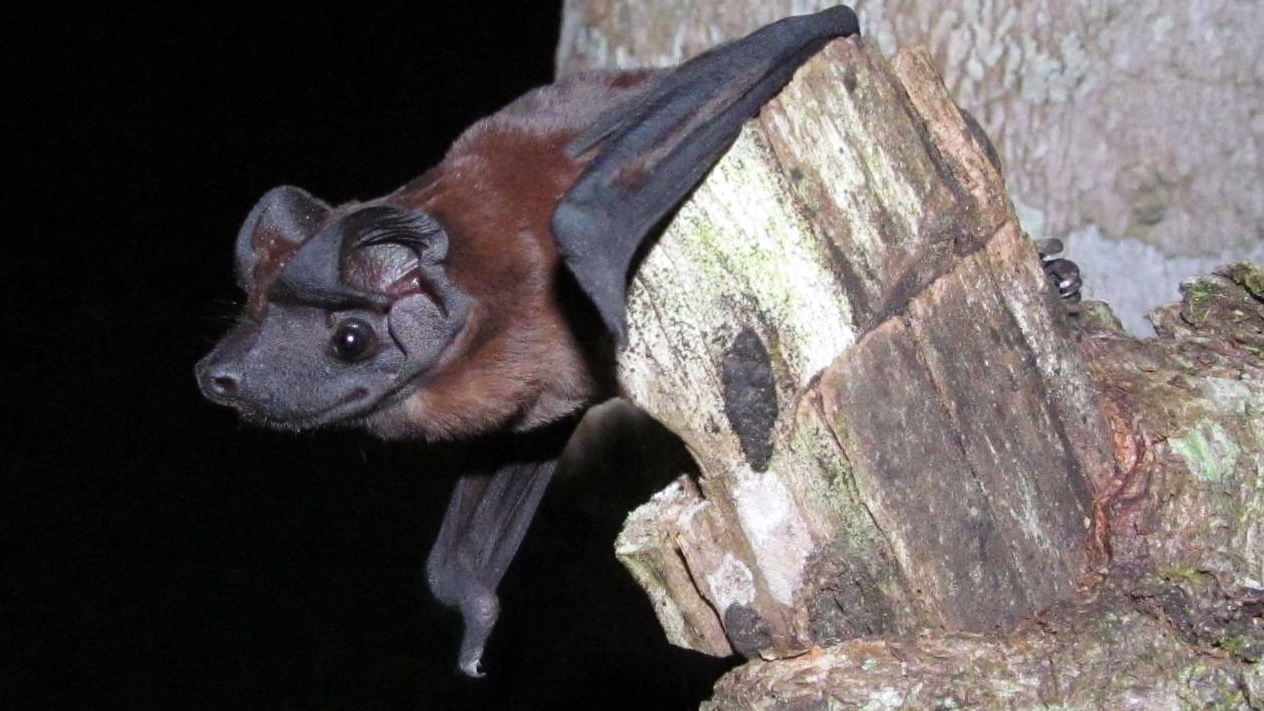
Patricia Freeman, professor emeritus at the University of Nebraska-Lincoln, was at home checking her email when she saw a note from a friend and colleague in Canada.
Congrats, the note read: You just had a species named after you.
The new species, found in Gamboa, Panama, was named Freeman’s dog-faced bat, or Cynomops freemani, by a group of researchers working there. The group recently published their findings on the species, one of two new dog-faced bat species they discovered at about the same time, in the journal Mammalian Biology.
“There are only about 6,000 mammal species on Earth,” Freeman said. “Unlike with insects, it’s rare to discover a new mammal species today, let alone get to name one.”
And this one — a bat with dark red fur, a black hound-like face, and well-developed antitragus (an ear trait) — was named after her.
“It’s wicked cool, right?” she said.
Freeman’s career has been devoted to studying bat species, starting with her doctoral dissertation on the free-tailed bat family. She later became the in-house bat expert at the School of Natural Resources at Nebraska, where she served as a professor of mammalogy and wildlife. Prior to starting with SNR, she was curator of zoology for the University of Nebraska State Museum from 1981 to 2003. She continues her work with both institutions in her retirement.
The researchers chose Freeman as their inspiration because of her dedication to understanding the relationships within the family of free-tailed bats, including the dog-faces species, they said.
“Naming this new bat species after Dr. Freeman is in honor of her dedication and decades of work that has been instrumental in our understanding of this group of bats,” said Rachel Page, staff scientist at the Smithsonian Tropical Research Institute in Panama, who worked on the project.
“Everyone who works with taxonomy and systematics of molossid (free-tailed) bats certainly uses her work as a ‘bible’,” added Ligiane Moras, lead author on the paper.
Freeman’s dog-faced bat was first captured in 2012, when the researchers caught 56 of them during a five-day stay in Gamboa, according to a Smithsonian Institute release. The species of dog-faced bats are notoriously difficult to catch as they fly fast and high in the sky, well above mist nets, the typical method used to capture bats. A second group of researchers confirmed the occurrence of the new species there in 2017.
Their findings were published in the March edition of the journal, but were made available online in January. That’s when Freeman learned of the honor.
“My first reaction? People out there really are reading your research,” she said. The second? “I really appreciate that they named it after me.”
To learn more about Freeman and her recent research, click here.
Writer: Shawna Richter-Ryerson, Natural Resources